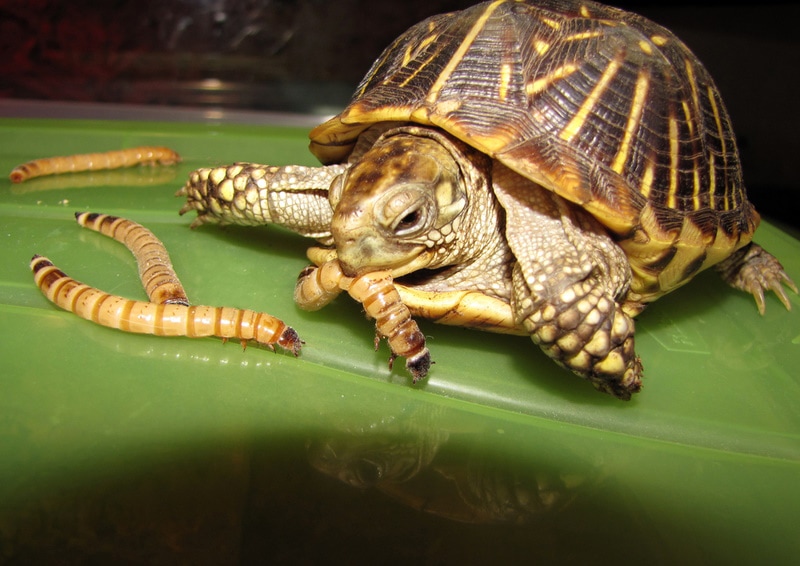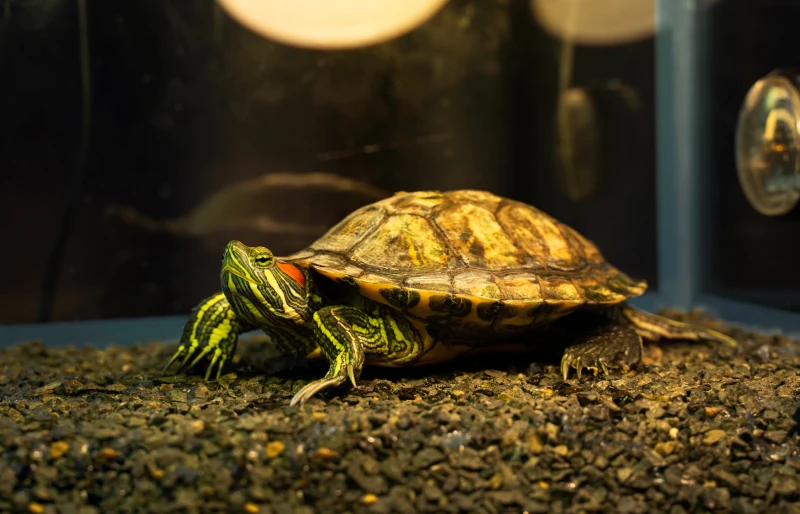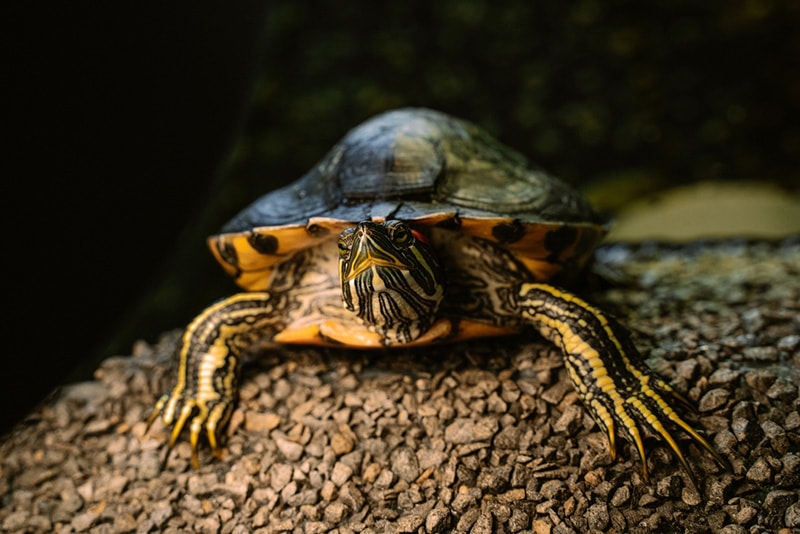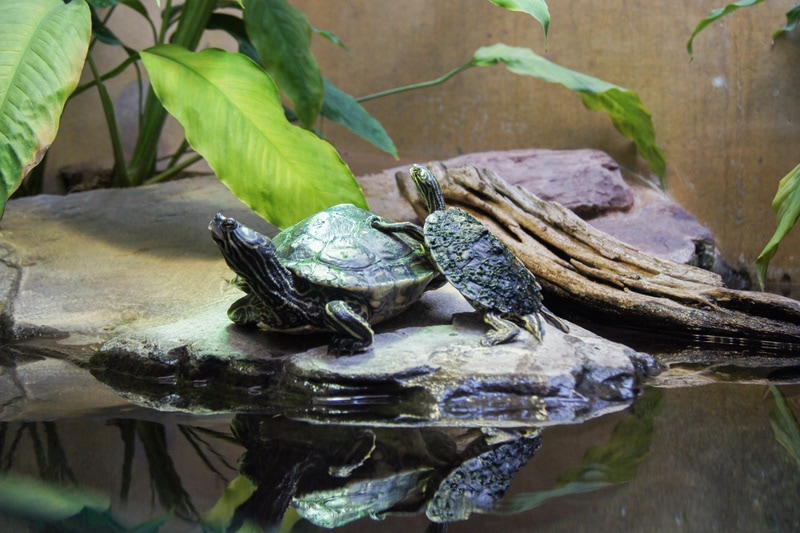How Long Do Turtles Live? Average Lifespan, Data & Care

Updated on

Click to Skip Ahead
As you embark on the rewarding journey of pet ownership, considering a turtle may bring an interesting twist. Famous for their long lifespans, turtles can provide companionship for many years, even decades. But how long do turtles live, exactly? And what does it take to care for these fascinating creatures properly? Turtle lifespan differs by each species, but can range from 25 to 100 years! Let’s dive into the world of turtles and find out.

Turtle Average Lifespan
The lifespan of a turtle is as diverse as the number of species that exist. On one end, you have species like the red-eared slider and painted turtles, known for their potential to live up to 40 years or more when kept in optimal conditions. On the other end, you have species like African sideneck turtles and map turtles, which, despite having a shorter lifespan of about 25 years, still outlive many traditional pets.

How Long Do Turtles Live in the Wild?
Life in the wild poses numerous challenges to turtles, from predatory threats to habitat destruction. Despite these hurdles, many wild turtles manage to live for several decades. Some species, particularly tortoises, have been known to live for over a century, marking them as one of the longest living creatures in the world. However, it’s hard to put a number on it considering all of the different species as well as the potential threats that each species faces in the wild.

Why Do Some Turtles Live Longer Than Others?
As with any pet, the quality of care you provide your turtle plays a significant role in determining its lifespan. Here’s how you can ensure your shelled friend lives a long and healthy life:
1. Feeding & Diet
A balanced diet is crucial for a turtle’s health. The specifics of a turtle’s diet can vary depending on the species, but most thrive on a combination of commercial turtle food and fresh produce. Dr. Mark Mitchell, a renowned veterinarian specializing in reptile medicine, recommends a combination of commercial turtle food, leafy greens like romaine lettuce or dandelion greens, and occasional treats such as earthworms, small fish, shrimp, or other aquatic invertebrates.

2. Creating the Perfect Turtle Environment
Designing the ideal habitat for your turtle is more than just filling a tank with water. It’s about providing a comfortable and stimulating environment that caters to their natural behaviors and physiological needs.
Temperature control is a critical aspect of this. Turtles are ectothermic animals, meaning their body temperature is largely influenced by their surroundings. Maintaining the water temperature between 78 to 82 degrees Fahrenheit is essential for their comfort and health. The basking area, a dry, warm spot where your turtle can soak up heat, should be slightly warmer, around 80 to 85 degrees Fahrenheit. Some species prefer even warmer basking spots, so it’s important to research your specific type of turtle.
Lighting is another crucial component. Turtles need access to both UVA and UVB light, which is necessary for their metabolic processes and overall health. UVA light encourages behaviors such as feeding, mating, and basking, while UVB light helps them synthesize vitamin D3, essential for calcium absorption and shell health.
3. Providing Comprehensive Care
Caring for a turtle extends beyond basic needs like food and cleanliness. It involves close observation of their behavior for any signs of distress or illness, providing mental stimulation, and ensuring their safety.
Mental stimulation can be provided through toys, rearranging the habitat occasionally, and allowing safe exploration outside the tank under supervision. Keeping an eye on their behavior can alert you to potential issues. For instance, changes in eating habits, lethargy, or unusual aggression can signal health problems.

4. Maintaining a Clean Habitat
A clean habitat is vital for preventing diseases. Regular water changes are necessary to keep the environment fresh and free from waste buildup. Additionally, a turtle tank filter can help maintain water quality by filtering out harmful toxins such as ammonia, nitrites, and nitrates. These substances can accumulate over time from turtle waste and uneaten food, posing health risks if not effectively managed.
5. Pairing and Breeding Turtles
Introducing a new turtle into your pet’s space should be done with caution. A sudden addition can cause stress and lead to conflicts. Gradual introduction, careful monitoring, and ensuring enough space can help ease the process.
Breeding turtles is a significant undertaking that requires thorough knowledge about their mating habits, gestation period, and care of hatchlings. Before deciding to breed your turtles, extensive research and preparation are advised.
6. Healthcare for Turtles
Turtles, like us, require regular healthcare check-ups. Finding a vet who specializes in reptile care can ensure your turtle receives the best possible medical attention. Regular check-ups can help detect potential health issues early, and prompt treatment can greatly improve your turtle’s chances of recovery. Apart from this, understanding common turtle diseases and their signs and symptoms can help you identify when your turtle may need medical attention.


The Life Stages of a Turtle
Understanding the life stages of a turtle (hatchling, juvenile, adult) can help you better cater to their changing needs. Each stage has specific dietary, environmental, and care requirements that need to be met for your turtle to thrive, but the time it takes for turtles to reach each life stage varies based on the species. Additionally, understanding a turtle’s life stages can also help you ascertain when it is time to introduce new tank-mates or change up their environment.
How to Tell Your Turtle’s Age
Trying to figure out your turtle’s age can be a bit of a puzzle. Sure, you could count the growth rings on their shell — kind of like counting the rings on a tree stump — but that’s not always spot-on. Turtles don’t play by the rules, and they might grow more rings when they’re living a good life with plenty of food around, or fewer rings when times are tough.
Size can give you a clue about a turtle’s age. Baby turtles are tiny — usually no bigger than your thumb! As they grow up, they get bigger, and comparing your turtle’s size to an average size chart for its species can give you a pretty good guess about their age.
Got a turtle from a breeder who keeps records? Jackpot! If you know when your turtle hatched, you can track its age as accurately as your own birthday.
And finally, there’s a super-scientific method called skeletochronology that can tell a turtle’s age from its bones — but don’t worry, this is only used for research purposes and isn’t something pet owners need to consider.
So, while pinning down your turtle’s exact birthday might be a bit tricky, these methods can help you make a good guess. And whether your turtle is young or just young at heart, what matters most is giving them the love and care they need to live a long, happy life.


Conclusion
Owning a turtle is a long-term commitment that can bring immense joy and fascination. With the right care and attention, your shelled friend could be part of your life for many decades. Remember, the key to a long and healthy turtle life lies in providing a balanced diet, a suitable environment, and regular healthcare. So, gear up and get ready to embark on this incredible journey of turtle parenting!
See also:
- Reeve’s Turtle (Chinese Pond Turtle): Pictures, Facts, Diet & Care Guide
- Can Turtles Eat Eggs? Vet-Reviewed Nutrition Facts & FAQ
Featured Image Credit: Jay Ondreicka, Shutterstock









